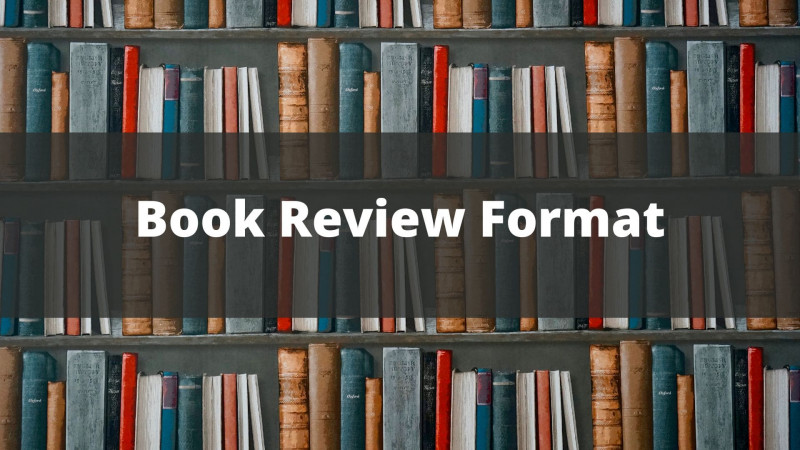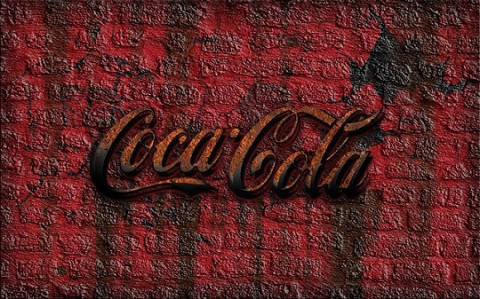
12 min
0
10.18.2022

Writing book reviews is not just a task that teachers and professors assign to assess the students' opinion-forming abilities. Many writers use the book review format as an easy route to getting their own chance at publication.
You can gain many benefits from following the proper college book review format. It improves your writing style and your analytical skills. You also learn a lot about how publishing functions.
Here you will find out about the format of a book review and how to use it.
How to Format a Book Review?
College students need to follow the correct format when writing a custom book review essay. The book review format for students helps deliver a better in-depth analysis of every aspect of the book. For example, you can analyze how the author structured its primary themes. Also, if the author was successful in implementing that or not.
There are many ways to format your review essay. Choosing a suitable template will help you create an excellent first impression. That is why a review template is a valuable tool if you are to engage the reader in the story.
Students can also learn how to put down their thoughts in a well-structured way by following the review templates.
History Book Review Format
Now, you cannot follow the same review format or template for every type of book. Although some basics might be similar, there are different book review formats to follow.
For instance, the review format for historical books will be a lot different than the review format for critical books. The writing format for book reviews of this time requires you to learn about the previous work done by the same author. This includes going through various articles and books by the writer.
You may even find the author critically reviewing the work of other authors, and you can use those as citations.
You can also mention if the author of the book you are reviewing has won any awards. Once you find all the information, it will help you to understand the author's point of view better.
Here's what you can follow:
- Write a few lines regarding the genre of history the author writes in and the approach he takes. In history books, the focus could be on gender, class, race, labor, law, culture, etc. Identifying the type of history work the book is can make your work easier.
- Next, write a summary of the topic and the author's argument. You do not need to be too elaborate in this segment; just a few simple sentences will do. You can mention the demographics, time period, and any major event mentioned in the book.
- Now, explain how the author has structured the book. History books can be structured in many different ways, like chronological structure, thematic structure, etc.
- Mention if the structure helps establish the author's arguments or distracts the readers from them.
- Talk about the evidence the author has provided in favor of his arguments. This includes data, narratives, characters, etc. If you feel the author could have provided better or more evidence, you can also mention that.
- These arguments will help you discuss the strong and weak points in the book. You can take some liberty about how you sequence the structure here.
- Lastly, include a conclusive thought about whether you would recommend your readers to read the book.
Critical Book Review Format
The critical book review format is different from the previous example. In this type of review, you put more emphasis on summarizing the thoughts and evaluating all the ideas and information of an article.
You may argue that you are doing the same while reviewing a history book. But that is not true.
A review format for historical books can be considered just a review. You are merely gathering all the details of the author and content of the book and mostly summarizing it.
But in a critical book review format, you scrutinize every piece of information after researching it. In a way, this is a more thorough work that requires more effort and time.
The proper format here would be to stick to three-four pages while reviewing the book critically.
- Try not to go overboard with the summary and make sure it is not more than 1/3rd of the length of the entire paper.
- You must include all the book's significant features, arguments, themes, ideas, and characteristics within this section. This will also help you to put your thoughts across in a concise manner.
- You also have to ensure that you organize the themes of the book and explain them in your own language. This is the tricky part, as most of your grades will depend on how well you can execute this.
- You must identify the thesis and determine how compelling the authors' arguments have been. Mention whether you found the attempt by the author to be a success or not. For example, you can establish your own points by citing how the author has succeeded or failed in supporting his arguments.
- Do not include any cover page for your review essay. Instead, mention information, like the title, author, place and date of publication, the number of pages, etc. Here, you can also include other materials, like the bibliography, illustrations, charts, and maps.
- Make sure to number the pages, except for the first page.
- Always format the document with left-justified margins.
- When providing citations and quotations, do not go above two lines of the text. Also, try not to go overboard with this, as it limits the chance to establish your own thoughts.
- Skip three lines and write your name at the end of the review along the right-justified margin. Also, write the name of the semester and the course title. For example,
John Wick
HIST 3000 Brief History of Time
Summer 2022
Different Types of Citations in Book Review Format
Citation is a significant part of any format for book review. Although you should use this tool in a limited way, there are various methods of doing this right.
The citation style will vary according to the type of academic work you are assigned. For instance, book review APA format, Turabian style review format, etc.
✒️APA
The writing style of the American Psychological Association or APA format is suitable for writing work in Education, Psychology, and Sciences. The APA style is most helpful in delivering your ideas crisply and concisely.
Your ideas can flow more naturally once the style or format is determined.
In the APA book review format, you can credit the sources appropriately. It also helps in organizing the papers the right way.
Formatting Standards
The general formatting standard for the APA review format is as follows:
- Use the Times New Roman typeface.
- The font size should be 12 points.
- Add a one-inch margin on all pages.
- Provide double space between the lines of text.
- You should double space the headings, title, and references too.
- Align your entire writing with the left-justified margin or use the flush-left feature.
- Never use a hyphen to separate the words at the end of a line.
- Rather than that, try to keep the sentences as short as possible so the last word does not extend into the following line.
Take the last point above, for example. Instead of the long statement with "line" broken at the end of each line, try this:
- Writing short sentences can keep the last word from breaking into the following line.
✒️MLA
The book review format MLA or Modern Language Association format is perfect for subjects related to the humanities discipline.
General Formatting Standards
- The paper format should be the standard, white, and the dimension needs to be 8.5 x 11-inch.
- The double-space between the text is also followed in the MLA format.
- There is no stringent rule about the font or typeface, but you need to ensure that the italics look significantly distinct from the regular type style in that font.
- Font size should be 12 points in here as well.
- You must leave space only after punctuation marks, such as periods, commas, etc.
- There should be a 1-inch margin on all sides of the document.
- You need to put all the page numbers sequentially at the top with a header. The header needs to be at the top right corner of the document.
- There should be a 1 ½ inch gap from the top of the page.
- Mention titles of works in italics throughout the review essay instead of emphasis.
- Write the endnote on a separate page, which should come before the Works Cited page.
- You must include the Works Cited page at the end of the paper. You list the resources in alphabetical order in this list.
You can refer to the MLA Handbook when following the book review MLA format.
✒️Turabian
The Turabian writing style is usually good for reviewing works in History, Fine Arts, and Business. There is some similarity between the book review Turabian format and Chicago format, as the former is based on the latter.
It is named after Kate L. Turabian, an American Author who mentioned the format in her book, A Manual for Writers of Research Papers.
In the Turabian style book review format, there are two significant styles:
- Bibliography style
- Author - Date (Parenthetical citations) style
Formatting Standards for Bibliography Writing Style
- You need to cite the resources you base your arguments on by indicating a superscript number at the end of the sentence. This needs to be put after the full stop, like this.
- When you mention it the first time, you must provide the complete source information, like title, author name, publication details, and the page number.
- When mentioning the sources afterwards, you can shorten the information. E.g., mention just the author name, the shorter title, etc.
- You must mention up to three authors if you have soured from more than one author.
- You must also write et al. after the author's name, like Lisa Geller et. al.
- Indent the first line of the notes. After that, the rest of the lines should be aligned to the left-justified margin.
- The bibliography entries should have a hanging indentation. That means the first line would be left-justified and the following lines indented.
Formatting Standards for Author - Date (Parenthetical citations) Writing style
This style is most useful when referencing sources, such as journals, websites, books, etc. Here are some general guidelines for this style.
- Mention the page numbers when quoting or citing a source. Separate the page number with a comma. E.g., (Ted 1990, 21).
- Always follow (author, date) sequence when formatting using the parenthetical citation method.
- Enlist all bibliographical sources in a single list. Arrange the names in alphabetical order by the last name. E.g., William Smith should come before Thomas Vaughn.
- Mention the surname first for the first author. E.g., Vaughn Thomas instead of Thomas Vaughn.
- For the rest of the author names, you can mention the name first and surname later.
- You must enlist all authors in the same list, irrespective of the number.
✒️Chicago
There are a few rules regarding the font style or size in the Chicago format. If you choose something easily readable, it will be fine. For example, the Times New Roman and Calibri typefaces can be suitable font styles. Choosing a font size of 11 or 12 pt. is always a good idea.
Formatting Standards
Here are the basic guidelines if you do not know how to format a book review in Chicago style:
- Make sure to add at least a 1-inch margin on all sides of the page.
- Double-space the main text.
- Keep a ½-inch indent when beginning new paragraphs.
- Do not use the "justified" alignment. Instead, go for the left alignment, so the right side looks ragged.
- You have the flexibility to mention the page number either at the top right corner or at the bottom center of the page. But do not mention it in both places.
- You do not need to include a title page in the Chicago citation format. In most cases, just mentioning the title at the top of the page is sufficient.
- Make sure the title page text is center-aligned and double-spaced.
- The font for writing the title and the text should be identical.
- There should be some gap between the title and the page. The title should be 1/3 down the page.
- Capitalize the title and subtitle and use the font in bold. E.g., Civilization and Society in Tolstoy.
- You don't need to provide a page number to the title page. But make sure to include it in the page count. That means the first page of your text will be numbered 2.
- You need to capitalize every heading or headline.
- Keep a clear distinction between every heading level, such as chapters, subheadings, etc.
- You can quote proses of five or more lines in this format. That means you can cite more than 100 words easily.
- For poetry quotations, the limit is two lines minimum or more.
- Make sure to block quote every type of quotation. That means using a blank line instead of quotation marks. It will create a separation between the citation and the main texts. Also, indent the citation by an extra ½ inch.
- Do not double-space the quotations and citations.
- Always mention the full form of an acronym when introducing it for the first time. E.g., The style of the American Psychological Association or APA format.
FAQ
What is the most common book review format?
The essay-style format is the most common review format out there. Most newspapers and academic papers follow this format. However, you may find that some essay-style reviews utilize informal categories to discuss the setting, writing, characters, plot, etc. You can follow the same format for fiction, non-fiction, etc.
What are the basic guidelines for the APA book review format?
The APA review formatting includes various instructions from the American Psychological Association. In this format, you include a 1-inch margin all around the document. The texts should have double space throughout, including title, headings, body, etc. The alignment should be left, and the font should be Times New Roman and size 12 pt.
In an MLA format entry, is the URL sufficient citation information?
No, including URL is optional in MLA format entry. You must also eliminate the https:// section when mentioning the URLs. You can also include the digital object identifier or DOI instead of URLs. However, if you must include URLs, ensure only to include high-authority websites with titles, author's name, and date of publication mentioned.
What is the use of the Turabian style book review format?
Turabian-style reviews are best for history papers. When you use the book review Turabian format, you have to read the book thoroughly to understand its theme and thesis. This also includes you reading the book of other authors regarding the same period and events to validate the main author's arguments. To improve your paper, narrow the emphasis.
How to write a book review in Chicago format?
Name the reviewer last, then first. Subtitles, if any. The author's name would follow this, the first name first and the last name second. You must mention the name of the journal in which the review appeared, date, number of articles, etc. Here's how to format a book review in Chicago style.
Where do people buy book reviews? At Studybay! Need book review writing help? Write us now!



